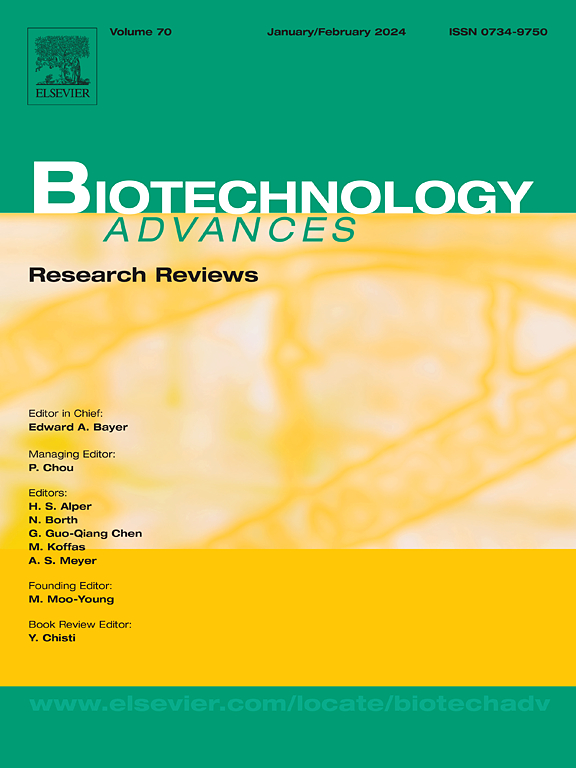Capturing intrinsic protein dynamics for explaining beneficial substitutions from protein engineering campaigns
IF 12.5
1区 工程技术
Q1 BIOTECHNOLOGY & APPLIED MICROBIOLOGY
引用次数: 0
Abstract
Directed evolution and knowledge-based design have been proven to be successful strategies for engineering proteins to desired applications. Traditional engineering strategies have focused on analyzing “hot spots” such as the substrate binding pocket to identify key positions. Yet, with a deeper understanding of protein structure-function relationships, many protein residues could significantly contribute to protein functionality, as they have the potential to influence one another and consequently alter protein conformation through the interconnected network formed by amino acids. Hence, it is essential to highlight the intrinsic dynamics in guiding protein engineering. This involves two main aspects: firstly, focusing on the exploration of protein conformation dynamics in order to understand how substitutions affect global and local conformations. Secondly, analyzing the intricate networks of amino acids in order to capture the amino acid interaction network and understand the impact of distal mutagenesis on the protein mutability landscape. Understanding intrinsic dynamics can deepen the understanding of both global and local enzyme properties, and help identify critical hotspots that researchers often overlooked in traditional protein engineering campaigns but are essential for property improvements. Additionally, we also discuss the current computational and experimental approaches in capturing protein conformations and amino acid networks.
捕获内在的蛋白质动力学,以解释蛋白质工程活动中的有益替代
定向进化和基于知识的设计已被证明是工程蛋白的成功策略。传统的工程策略侧重于分析“热点”,如基板结合袋,以确定关键位置。然而,随着对蛋白质结构-功能关系的深入了解,许多蛋白质残基可以显著地促进蛋白质的功能,因为它们有可能相互影响,从而通过氨基酸形成的相互连接的网络改变蛋白质的构象。因此,强调内在动力学是指导蛋白质工程的必要条件。这涉及两个主要方面:首先,关注蛋白质构象动力学的探索,以了解取代如何影响全局和局部构象。其次,分析复杂的氨基酸网络,以捕捉氨基酸相互作用网络,了解远端诱变对蛋白质易变性的影响。了解内在动力学可以加深对全局和局部酶性质的理解,并有助于确定研究人员在传统蛋白质工程运动中经常忽视的关键热点,但这些热点对性能改进至关重要。此外,我们还讨论了目前在捕获蛋白质构象和氨基酸网络的计算和实验方法。
本文章由计算机程序翻译,如有差异,请以英文原文为准。
求助全文
约1分钟内获得全文
求助全文
来源期刊

Biotechnology advances
工程技术-生物工程与应用微生物
CiteScore
25.50
自引率
2.50%
发文量
167
审稿时长
37 days
期刊介绍:
Biotechnology Advances is a comprehensive review journal that covers all aspects of the multidisciplinary field of biotechnology. The journal focuses on biotechnology principles and their applications in various industries, agriculture, medicine, environmental concerns, and regulatory issues. It publishes authoritative articles that highlight current developments and future trends in the field of biotechnology. The journal invites submissions of manuscripts that are relevant and appropriate. It targets a wide audience, including scientists, engineers, students, instructors, researchers, practitioners, managers, governments, and other stakeholders in the field. Additionally, special issues are published based on selected presentations from recent relevant conferences in collaboration with the organizations hosting those conferences.
 求助内容:
求助内容: 应助结果提醒方式:
应助结果提醒方式:


